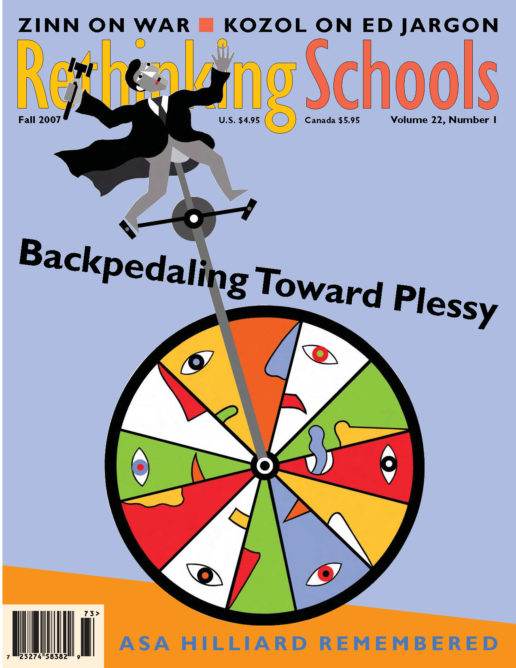Teaching for Change
We are in danger of losing a vital institution in the social justice education movement. The Teaching for Change catalog — far and away the best and most comprehensive resource focusing exclusively on critical, multicultural teaching materials — is in dire financial distress. Twice a year, the Washington, D.C.-based Teaching for Change sends its catalog to between 35,000 and 40,000 educators, alerting people to an extraordinary collection of resources, some of which are unavailable anywhere else. Despite strong sales, the catalog’s operation lost money for the last two years. Teaching for Change has been forced to downsize its catalog mailings and is facing even more substantial measures in the coming year.
When the Teaching for Change catalog arrives in our mailbox or shows up at conferences we attend, it might appear to be simply another colorful magazine of product advertisements. It’s not. The catalog — and its online version at www.teachingforchange.org – is a result of twenty-five years of international solidarity and social justice education work. The organization Teaching for Change was born in 1982 as the Network of Educators’ Committees on Central America (NECCA), to coordinate educational solidarity work around the wars in El Salvador, Nicaragua, and Guatemala.
As NECCA broadened focus, it became the Network of Educators on the Americas (NECA) and took on an array of social justice projects — including co-publication with Rethinking Schools of the first edition of Rethinking Columbus in 1991 and sponsorship of Rethinking Columbus workshops throughout the country the following two years — and worked closely with the National Coalition of Education Activists and the National Association for Multicultural Education. It was during this time that NECA recognized that, although there were many valuable “teaching for change” resources being published, there was no central clearinghouse to make them available. Teachers looking for alternative materials to use with students had to seek these out one-by-one, hunting through catalogs or progressive bookstores.
When NECA launched the Teaching for Change catalog in 1992, teachers and teacher educators suddenly could locate the most useful curricula, videos, children’s books, maps, and background books all from one source. The catalog was never intended to turn a profit; it was intended to facilitate social justice teaching.
A number of factors have combined to squeeze Teaching for Change by decreasing sales and increasing costs. One is the NCLB-induced testing mania that has standardized and narrowed the curriculum throughout the country, leaving less space for creative social issue teaching. Another is the impact of amazon.com and similar hurry-up discount outfits. Even social justice teachers sometimes succumb to bargain-hunting, inadvertently crippling an institution that has been built with such care over so many years. Finally, costs of printing and mailing have increased significantly.
But it’s not too late to make a difference.
You can:
- Order from www.teachingforchange.org
- Ask TfC to send you bulk copies of the catalog to distribute in department meetings, workshops, courses you teach, conferences you attend, and to sympathetic colleagues.
- Urge your school or school district to set up a “Teaching for Change” library.
- Announce www.teachingforchange.org on listservs you belong to.
- Donate to the work of Teaching for Change.
As with Rethinking Schools, Teaching for Change exists to support education for equity and justice. It’s too precious to take for granted.

